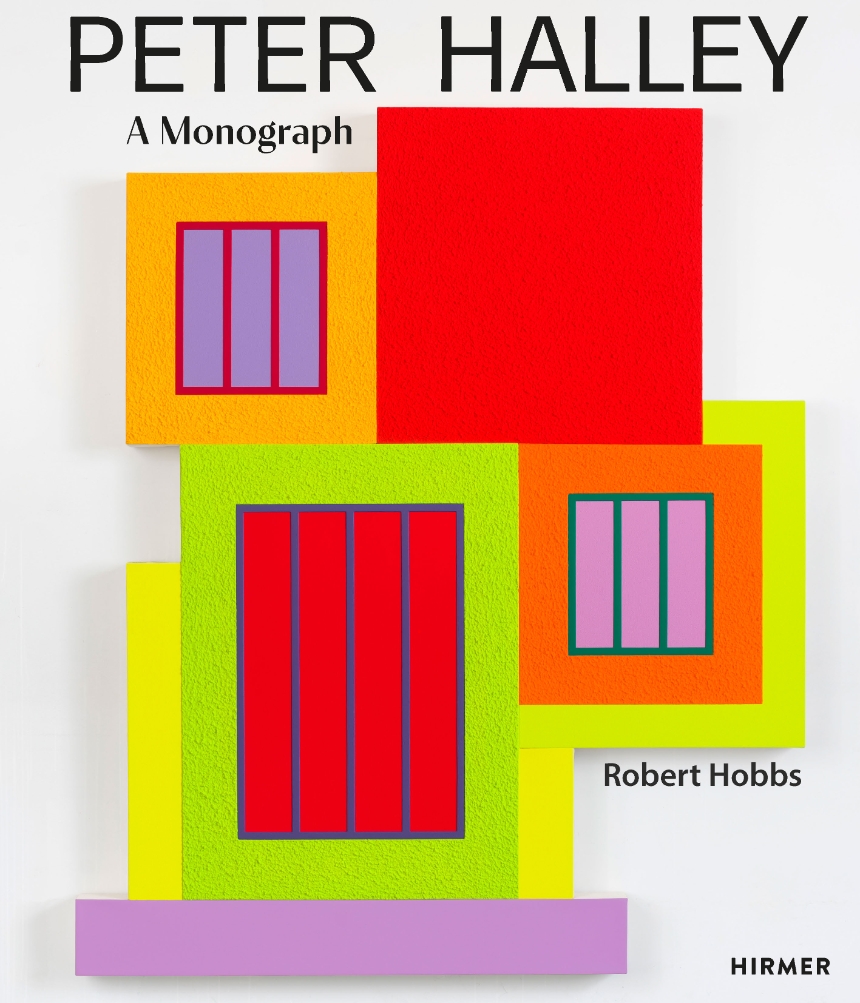What a prominent contemporary artist reveals about painting in the digital age—an era characterized by simulation and hyperreality.
At the height of postmodernism, just as the digital world was becoming a reality, Peter Halley revitalized painting by affiliating his work with sociology and science fiction. Employing lowbrow, commercial media—fluorescent colors and Roll-A-Tex, an additive used to surface suburban architecture—he debunked painting’s high art connotations. Deconstructing early- and mid-twentieth-century geometric abstraction, he transposed its rectangles into structures he referred to as “cells” and “prisons.” He then connected these with straight lines, or “conduits,” to imaginatively access outside forces.
Halley has met many of the challenges posed by the information age and French poststructuralism by situating his painting on the divide separating analog and digital worlds. Robert Hobbs’s monograph analyzes Halley’s geometric art in relation to the opportunities provided by the internet, the aesthetic possibilities afforded by Photoshop, Jacques Derrida’s deconstruction, Michel Foucault’s and Jean Baudrillard’s sociological theories, and the conundrums presented by both science fiction and physics.
At the height of postmodernism, just as the digital world was becoming a reality, Peter Halley revitalized painting by affiliating his work with sociology and science fiction. Employing lowbrow, commercial media—fluorescent colors and Roll-A-Tex, an additive used to surface suburban architecture—he debunked painting’s high art connotations. Deconstructing early- and mid-twentieth-century geometric abstraction, he transposed its rectangles into structures he referred to as “cells” and “prisons.” He then connected these with straight lines, or “conduits,” to imaginatively access outside forces.
Halley has met many of the challenges posed by the information age and French poststructuralism by situating his painting on the divide separating analog and digital worlds. Robert Hobbs’s monograph analyzes Halley’s geometric art in relation to the opportunities provided by the internet, the aesthetic possibilities afforded by Photoshop, Jacques Derrida’s deconstruction, Michel Foucault’s and Jean Baudrillard’s sociological theories, and the conundrums presented by both science fiction and physics.
256 pages | 113 color plates | 9 1/2 x 11 | © 2023

